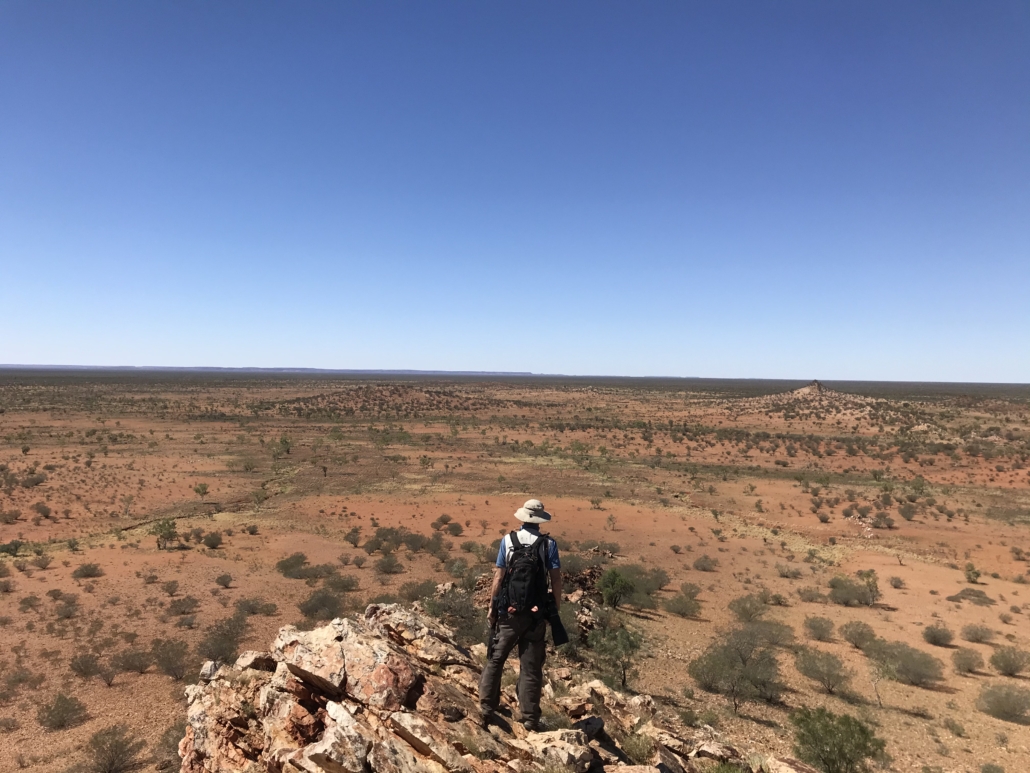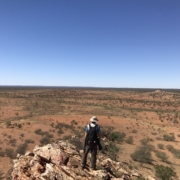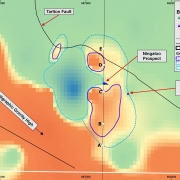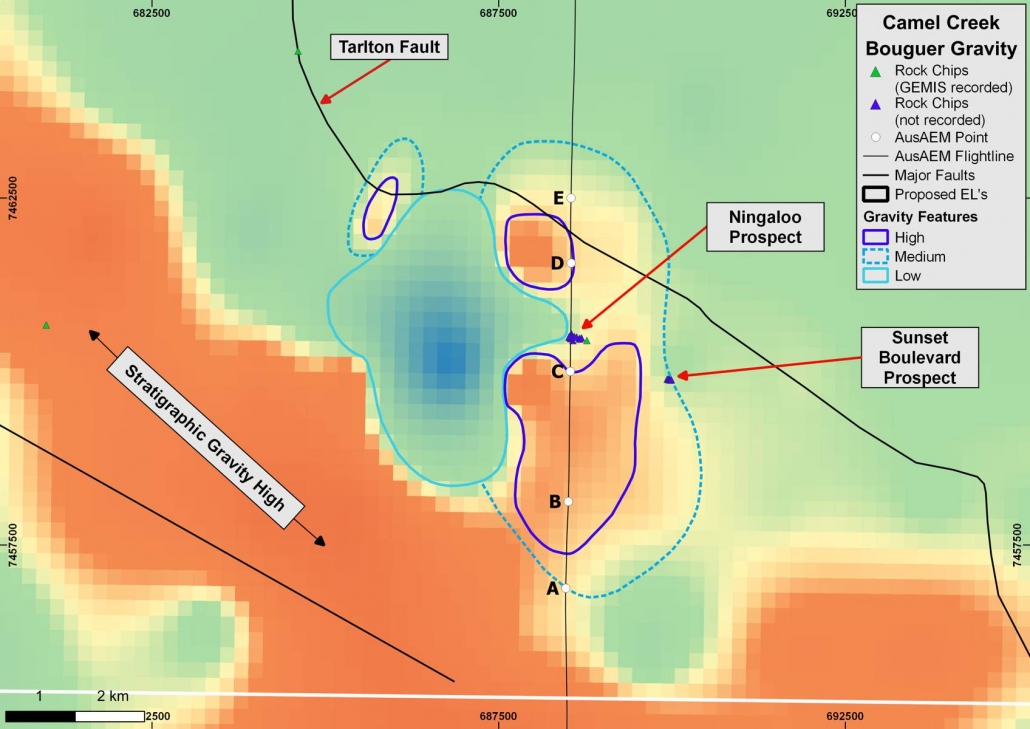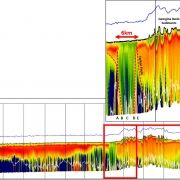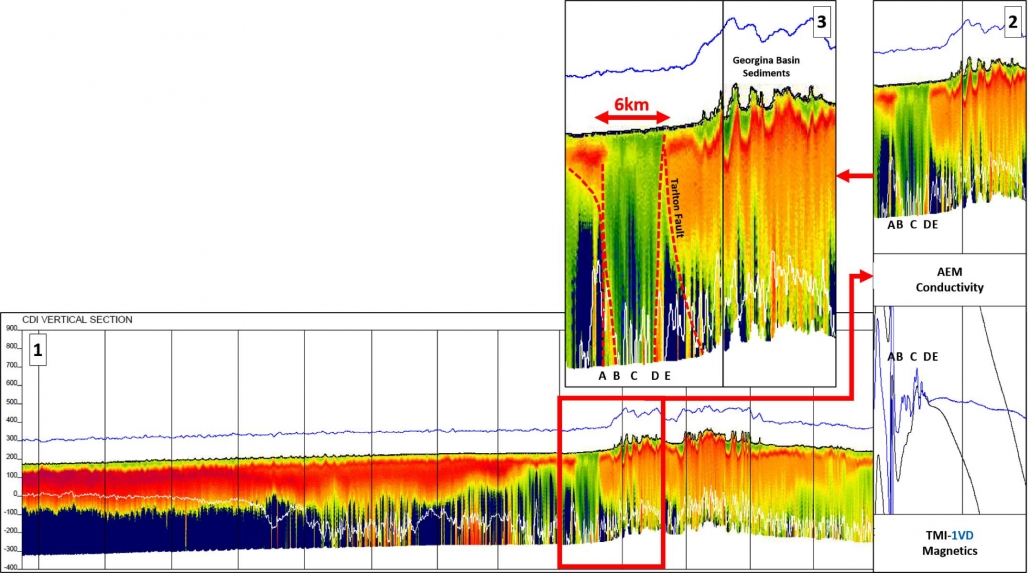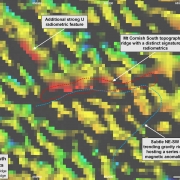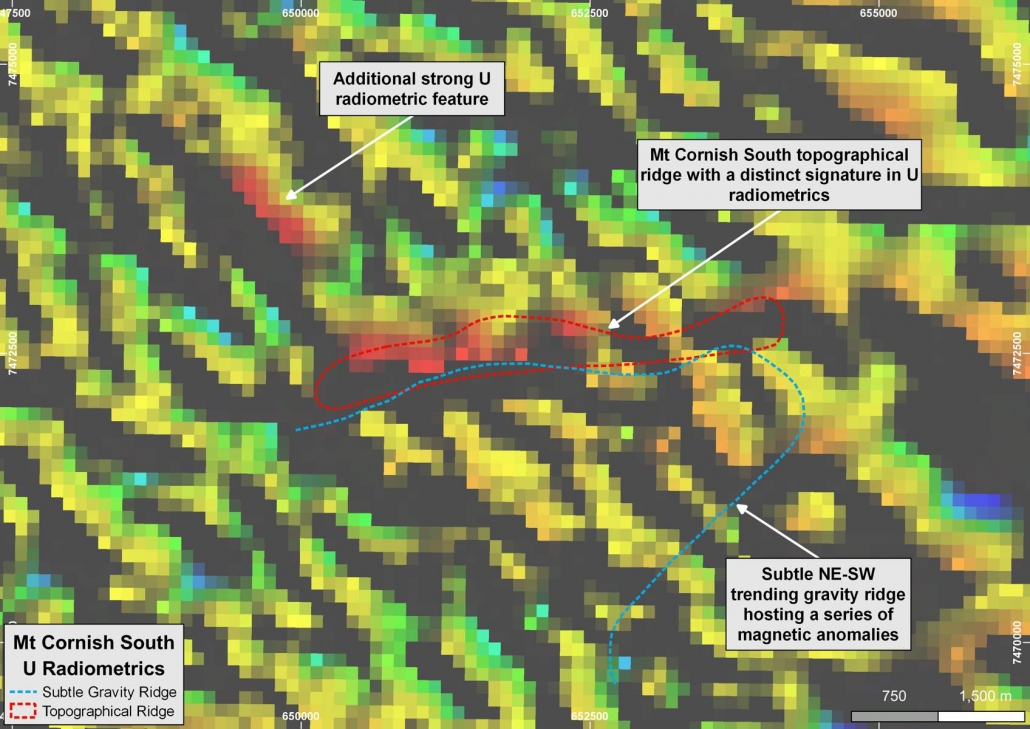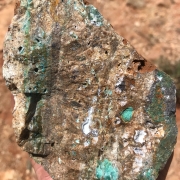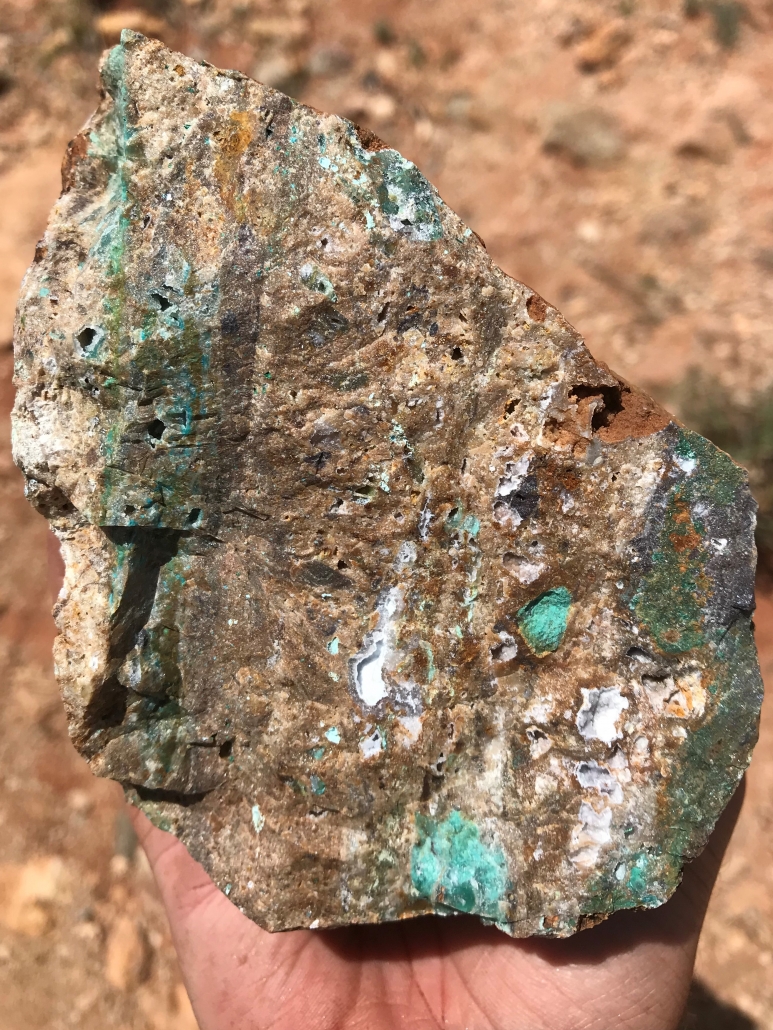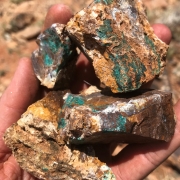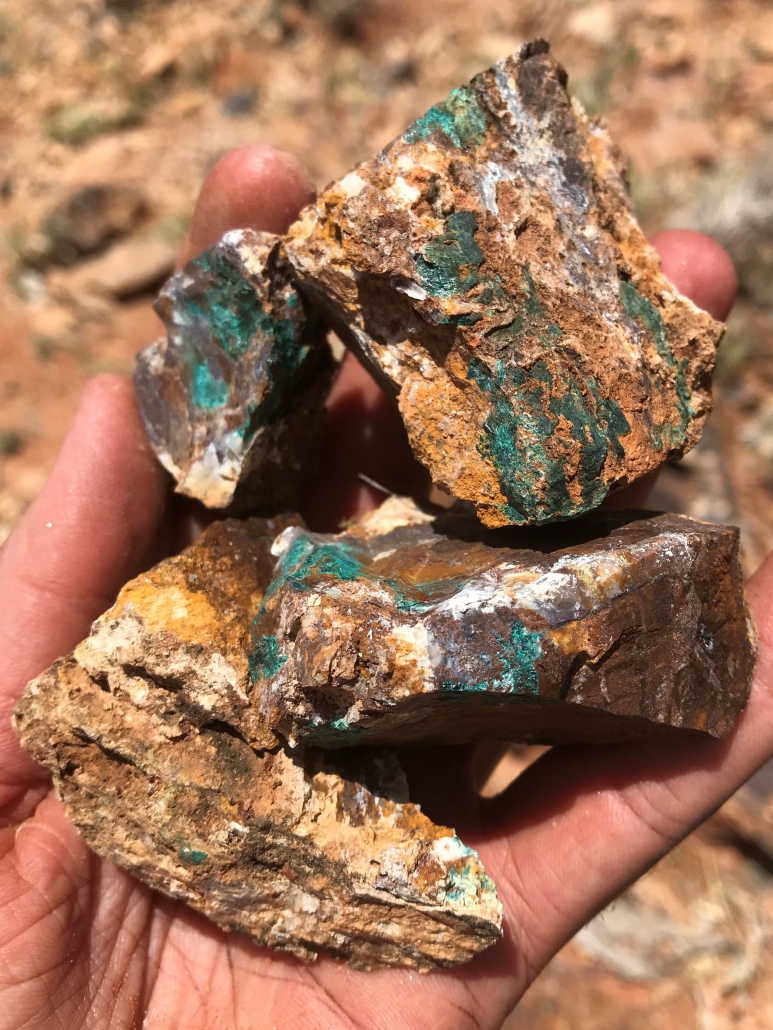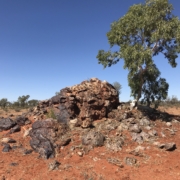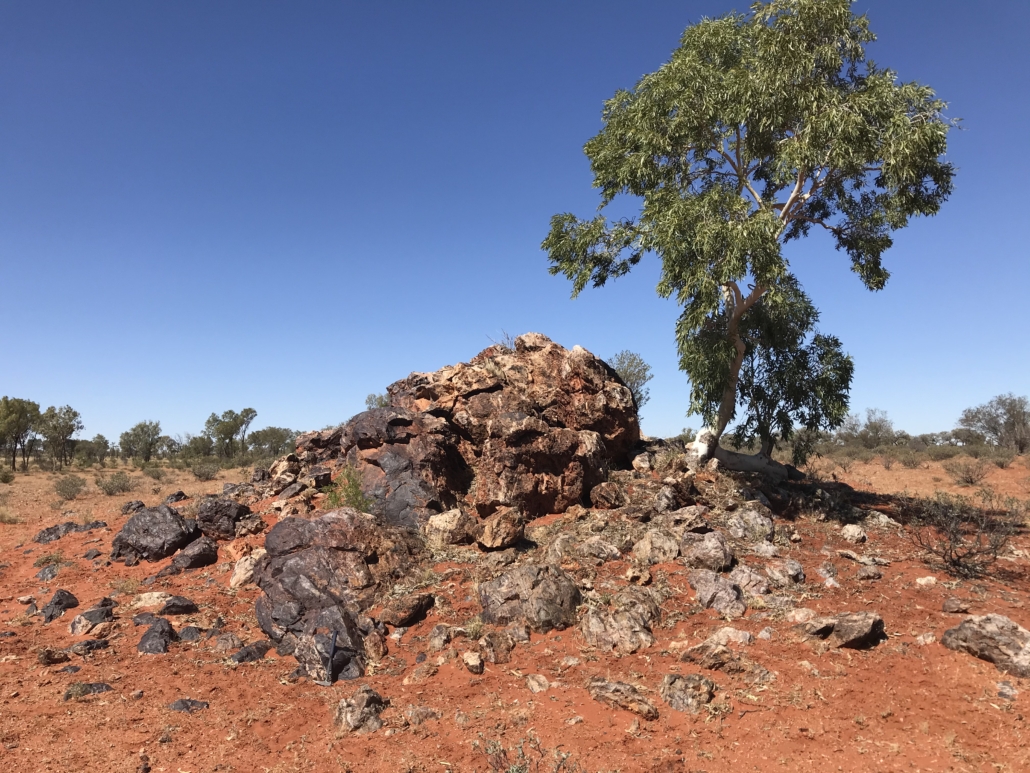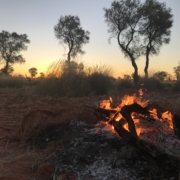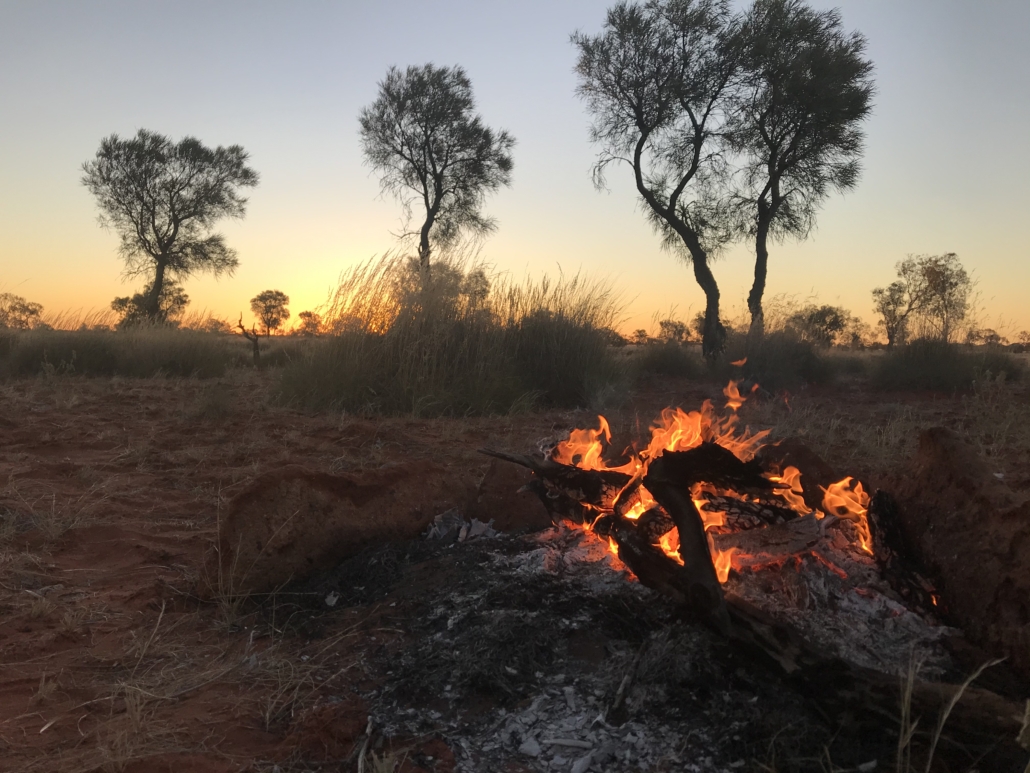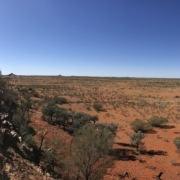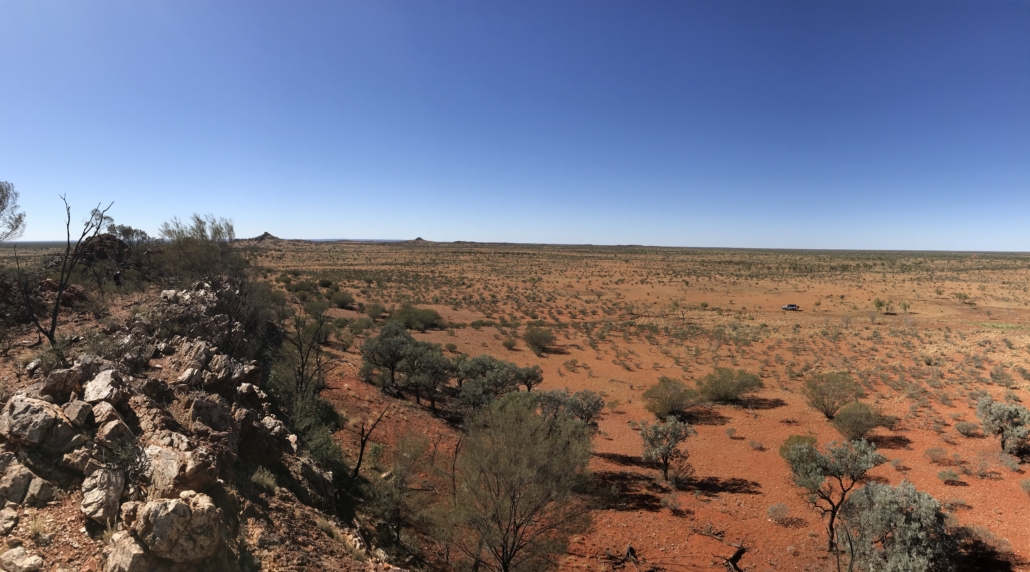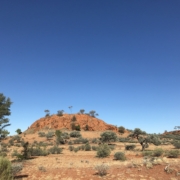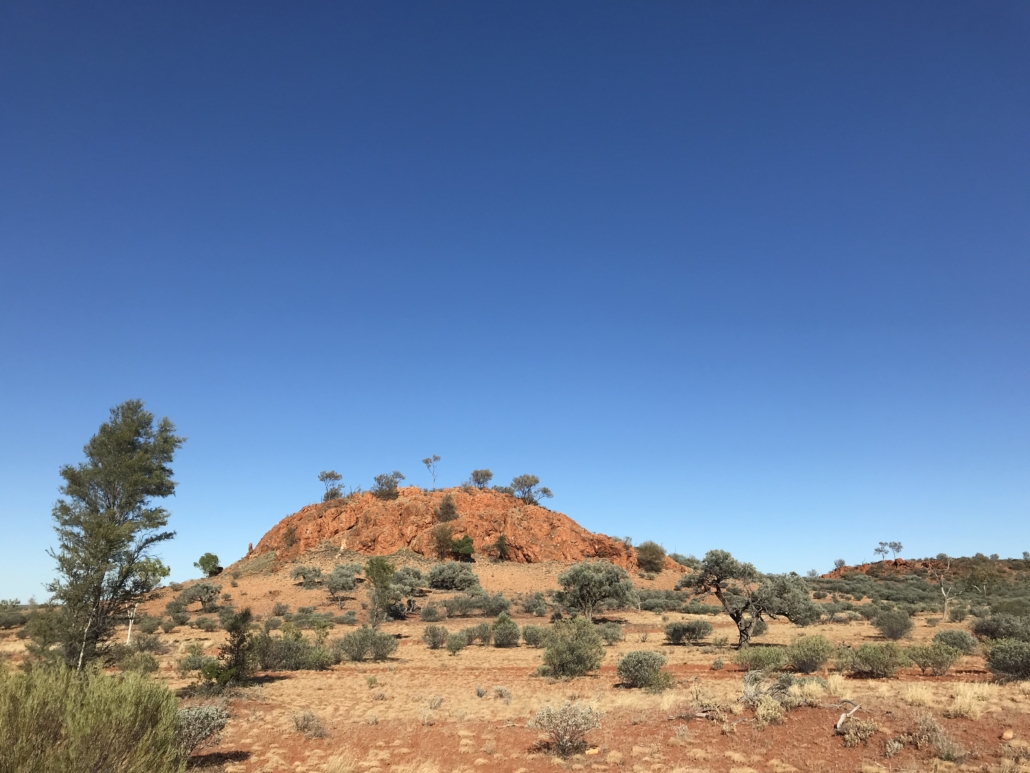Jean Elson Project
The exciting Jean Elson Project is located 325km east of Alice Springs in the Northern Territory and 30km north of Inca’s Lorna May Project. Jean Elson is considered highly prospective to host IOCG and/or orogenic Au style mineralisation. The Project is a joint venture between Inca Minerals (90%) and MRG (10%), and consists of three granted Exploration Licence tenements (EL 32485, EL 32486 and EL33214) that combined cover 2,147 km2.
Jean Elson was initially identified during in depth review of the underexplored Aileron Terrane, which forms part of the East Arunta Block in the Northern Territory. Thin but persistent sand cover occurs over much of the Project area; however, Proterozoic igneous and metamorphic rocks occur at shallow depth and outcrop in selected areas. Two high priority prospects, Camel Creek and Mt Cornish South were identified through historical exploration data.
The Company has undertaken extensive exploration of Jean Elson since late 2020 that has confirmed historical results for Mt Cornish South and Camel Creek and has subsequently found extensive and new areas of mineralisation.
The Camel Creek area is considered highly prospective, given that it is bounded by two major faults within which are numerous subsidiary faults with surface expressions in the form of outcropping vein swarms. Some of these vein swarms are malachite-mineralised with widespread haematite and silica alteration coincident with gravity, magnetics, and IP (chargeability and conductivity) geophysical anomalies.
Several prospects have been identified within the Camel Creek and regional Jean Elson Project area. These prospects are considered to be genetically related due to their shared structural trend, hydrothermal style textures, alteration, and anomalous geochemistry in IOCG pathfinder elements. Their locations within gravity and AEM anomalies are considered especially prospective. The entire Camel Creek area, which hosts the Ningaloo and Sunset Boulevarde prospects falls within a highly faulted structural zone adjacent to the regionally significant Tarlton Fault Zone.
In addition, extensive geophysical surveys have identified a number of strong targets at both the Mt Cornish South and Camel Creek tenements. As can also be seen in the attached figure, the numerous prospects, including Kestrel, Straw Neck Ibis, Mt Cornish South, Black Cockatoo, Little Eagle, Whistling Kite and Spinifex Pigeon which have all been identified from the various aerial and ground geophysical surveys undertaken by Inca in 2021-2022, are linked by the same NW-SE structures, which control the Ningaloo-Sunset Boulevarde trend.

The fact that all identified prospects broadly align with the northwest-southeast structural trend of major regional and local faults, makes this area highly prospective for IOCG and skarn-related mineral systems. These structural features are mantle tapping conduits, which facilitate the ascend of reduced mineralising fluids. Changing redox conditions as these fluids approach the surface, account for the alteration halo defined by hematite, silicification and carbonate, which has been mapped in the area. Modelled magnetitic anomalies are suggestive of a potential magnetite body at depth, which could be indicative of a buried IOCG system.
The occurrence of large prospective geophysical signatures hosting elevated geochemistry in granitic rocks all within a structurally complex region marks Jean Elson as a standout exploration opportunity.

